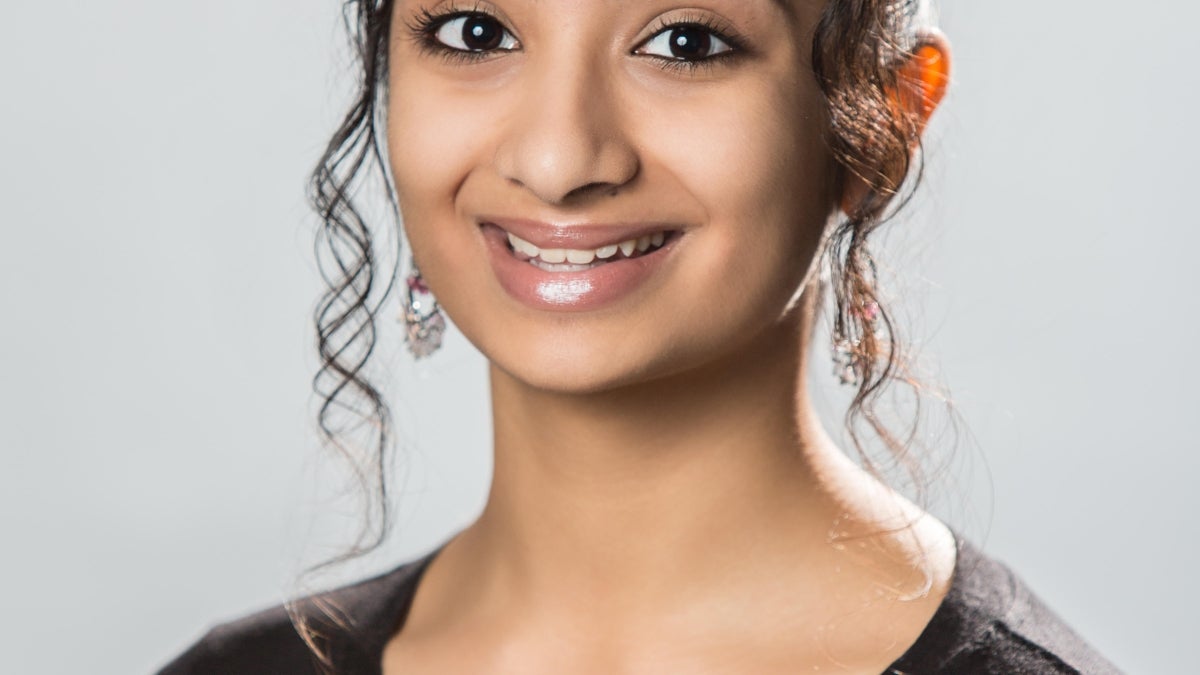ASU alum sets her mind to research brain-inspired computing

Alisha Menon was selected as one of six ASU engineering National Science Foundation Graduate Research Fellows. The program supports outstanding students considered to be potential leaders in science, technology, engineering and math. These students are contributing to the high-impact research, teaching and innovation needed to maintain the nation’s technological strength, security and economic vitality.
After completing a bachelor’s degree in electrical engineering and a long list of research projects by age 19, Alisha Menon will head off to the University of California, Berkeley this fall as one of 2,000 National Science Foundation Graduate Research Fellows.
Menon said she feels “so honored” to receive the fellowship because it recognizes the work she did while earning her bachelor’s degree in the Arizona State University Ira A. Fulton Schools of Engineering, and it has made her excited about starting her doctoral studies.
Menon is one of six NSF fellowship awardees from the Fulton Schools; a total of 16 fellowships were awarded to ASU students.
“I can really just focus on the research that I want to do and that I’m passionate about,” said Menon, who was chosen out of 12,000 NSF Graduate Research Fellowship applicants. “I’m truly honored by the award — and encouraged.”
As an NSF Graduate Research Fellow, she will receive three years of support, including a stipend of $34,000 and a cost-of-education allowance of $12,000 per year granted to UC Berkeley.
Menon was prolific in her undergraduate research, including work on neuromorphic, or brain-inspired, computing she did with Fulton Schools electrical engineering Assistant Professor Hugh Barnaby; contributions to an implanted electromyography, or EMG, sensor with University of Washington Professor Joshua Smith; and research on an implanted neuromodulation system that interacts with the brain for prosthetics and brain biosignal processing research with UC Berkeley Donald O. Pederson Distinguished Professor Jan Rabaey.
“I had some really wonderful research experiences and was honored to have had the opportunity to work with and meet people who are conducting truly incredible research in neural engineering,” Menon said.
She credits Barnaby for getting her interested in neuromorphic computing when she took his analog-digital circuits class at ASU, and Rabaey’s lab for showing her the inclusive, collaborative research team she could be a part of for her graduate studies.
As she prepares to embark on her graduate school journey, Menon's interests include three areas of neural engineering. The first is neuromodulation systems, which sit inside and interact with the brain through stimulation and recording. The second is machine learning and neural networks, the algorithms that process the signals recorded from the brain. The last is neuromorphic computing, involving hardware designed to function like the human brain. Whether she explores one of these areas or a combination of all three, it’s an exciting field to be involved in.
“There’s a lot of room for innovation in these areas. I am really looking forward to exploring, learning, discovering and contributing over the coming years,” she said.
Before Menon starts her fellowship at UC Berkeley, she’s across the country in New York City working at a startup called CTRLLabs, which is developing an EMG-based neural interface.
“Given that neural engineering technology is at a point where it can complete a task with a brain-computer interface, I’m really excited about where it could go — prosthetics, deep brain stimulation, virtual reality, as an interface technology in general,” Menon said. “It’s really cool, and I’m thrilled to be a part of it.”
More about the 2018 NSF Graduate Fellow from the Fulton Schools of Engineering:
Logan Mathesen engineering solutions to big data challenges
Brendon Colbert combats cancer with math
Lexi Bounds aims to improve lives with synthetic biology
Scott Freitas wants to use computer science to solve society's toughest problems
More Science and technology

Indigenous geneticists build unprecedented research community at ASU
When Krystal Tsosie (Diné) was an undergraduate at Arizona State University, there were no Indigenous faculty she could look to…

Pioneering professor of cultural evolution pens essays for leading academic journals
When Robert Boyd wrote his 1985 book “Culture and the Evolutionary Process,” cultural evolution was not considered a true…

Lucy's lasting legacy: Donald Johanson reflects on the discovery of a lifetime
Fifty years ago, in the dusty hills of Hadar, Ethiopia, a young paleoanthropologist, Donald Johanson, discovered what would…